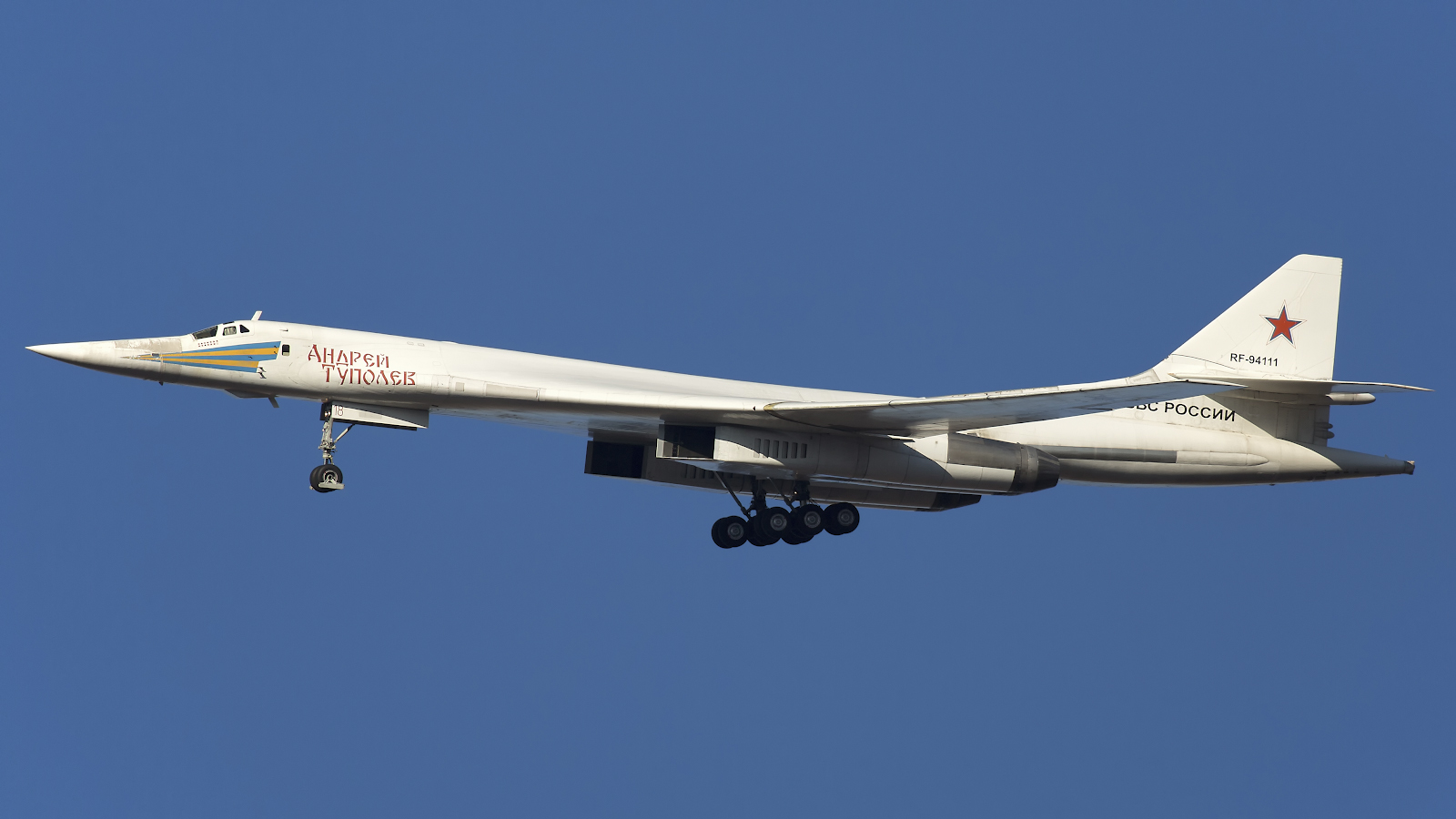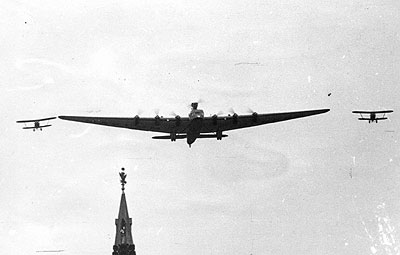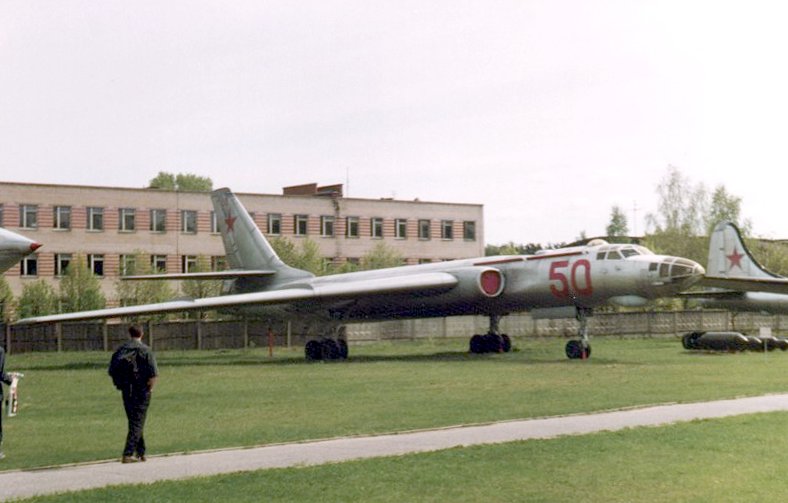|
Tupolev
Tupolev ( rus, Туполев, , ˈtupəlʲɪf), officially United Aircraft Company Tupolev - Public Joint Stock Company, is a Russian aerospace and Arms industry, defence company headquartered in Basmanny District, Moscow. UAC Tupolev is successor to the Soviet Tupolev Design Bureau (OKB-156, Soviet Union military aircraft designation systems#Soviet system after December 9.2C 1940, design office prefix ''Tu'') founded in 1922 by aerospace pioneer and engineer Andrei Tupolev, who led the company for 50 years until his death in 1972. Tupolev designed over 100 models of civilian and military aircraft and produced more than 18,000 aircraft for Russia, the Soviet Union and the Eastern Bloc since its founding, and celebrated its 100th anniversary on 22 October 2022. Tupolev is involved in numerous aerospace and defence sectors including development, manufacturing, and overhaul for both civil and military aerospace products such as aircraft and weapons systems, and also missile and nava ... [...More Info...] [...Related Items...] OR: [Wikipedia] [Google] [Baidu] |
Andrei Tupolev
Andrei Nikolayevich Tupolev (; – 23 December 1972) was a Russian and later Soviet aeronautical engineer known for his pioneering aircraft designs as the director of the Tupolev Design Bureau. Tupolev was an early pioneer of aeronautics in Russia and served as a protégé of Nikolay Zhukovsky (scientist), Nikolay Zhukovsky. Tupolev designed or oversaw the design of more than 100 types of civilian and military aircraft in the Soviet Union over 50 years, some of which set 78 world records. Tupolev produced many notable designs such as the Tupolev Tu-2, Tu-2, Tupolev Tu-16, Tu-16, Tupolev Tu-95, Tu-95, and Tupolev Tu-104, Tu-104, and the reverse engineered Tu-4. Tupolev was highly honoured in the Soviet Union and awarded various titles and honours including the Hero of Socialist Labor three times, Order of Lenin eight times, Order of the Red Banner of Labour two times, made an academician of the Russian Academy of Sciences in 1953, and a Colonel-General of the Soviet Air Forc ... [...More Info...] [...Related Items...] OR: [Wikipedia] [Google] [Baidu] |
Soviet Union Military Aircraft Designation Systems
Pre-revolutionary Imperial Russia (before 1917) did not have a single national unified system but instead relied on those provided by the manufacturers of the aircraft, like Sikorsky Ilya Muromets or Anatra Anasal. Pre-war Soviet system The Soviet system used from shortly after the revolution in 1923 and until gradually superseded after 1940, was divided by function, with numbers assigned in order by the government. Duplicate designations were common, as were multiple meanings for individual letters. Designers and manufacturers also had their own internal designations which could be confused for the official government designations. For instance, Tupolev's designs used the designator ANT, for A.N.Tupolev and Yakovlev's designs used AIR, for A.I.Rykov, the communist leader he reported to. Not all designations were taken up, some numbers were assigned to projects that were subsequently cancelled, often at a very early stage of development. Type prefixes (Cyrillic characters in paren ... [...More Info...] [...Related Items...] OR: [Wikipedia] [Google] [Baidu] |
OKB-156
Tupolev ( rus, Туполев, , ˈtupəlʲɪf), officially United Aircraft Company Tupolev - Public Joint Stock Company, is a Russian aerospace and defence company headquartered in Basmanny District, Moscow. UAC Tupolev is successor to the Soviet Tupolev Design Bureau ( OKB-156, design office prefix ''Tu'') founded in 1922 by aerospace pioneer and engineer Andrei Tupolev, who led the company for 50 years until his death in 1972. Tupolev designed over 100 models of civilian and military aircraft and produced more than 18,000 aircraft for Russia, the Soviet Union and the Eastern Bloc since its founding, and celebrated its 100th anniversary on 22 October 2022. Tupolev is involved in numerous aerospace and defence sectors including development, manufacturing, and overhaul for both civil and military aerospace products such as aircraft and weapons systems, and also missile and naval aviation technologies. In 2006, Tupolev became a division of the United Aircraft Corporation in a ... [...More Info...] [...Related Items...] OR: [Wikipedia] [Google] [Baidu] |
United Aircraft Corporation
The PJSC United Aircraft Corporation (UAC) () is a Russian Aerospace manufacturer, aerospace and Arms industry, defense corporation. With a majority stake belonging to the Russian government, it consolidates Russian private and state-owned Russian aircraft manufacturer, aircraft manufacturing companies and assets engaged in the manufacture, design, and sale of military, civilian, transport, and unmanned aircraft. Its corporate office is at Leningradsky Avenue, Khoroshyovsky District, Moscow. Many of the corporation's assets are located in Federal subjects of Russia, various regions in Russia, with joint ventures with foreign partners in China, India, and Italy. History Predecessor After the Soviet Union, Soviet Union's sudden Dissolution of the Soviet Union, collapse in 1991, the Aerospace industry of Russia, aerospace industry of Russia was in turmoil. An excessive amount of imports and highly Protectionism, protective tariffs devastated the manufacturing industry, both the ... [...More Info...] [...Related Items...] OR: [Wikipedia] [Google] [Baidu] |
Tupolev Tu-4
The Tupolev Tu-4 (; NATO reporting name: Bull) is a piston-engined Soviet Union, Soviet strategic bomber that served the Soviet Air Force from the late 1940s to the mid-1960s. The aircraft was a copy of the American Boeing B-29 Superfortress, having been Reverse engineering, reverse-engineered from seized aircraft that had made emergency landings in the USSR. Design and development Toward the end of World War II, the Soviet Union saw the need for a strategic bombing capability similar to that of the Western Allies. The Soviet VVS air arm had the locally designed Petlyakov Pe-8 four-engined "heavy" in service at the start of the war, but only 93 had been built by the end of the war and the type had become obsolete. The U.S. regularly conducted Air raids on Japan, bombing raids on Japan from distant Pacific forward bases using B-29 Superfortresses. Joseph Stalin ordered the development of a comparable bomber. The U.S. twice refused to supply the Soviet Union with B-29s under Lend ... [...More Info...] [...Related Items...] OR: [Wikipedia] [Google] [Baidu] |
Tupolev Tu-2
The Tupolev Tu-2 (development names ANT-58 and 103; NATO reporting name Bat) is a twin-engined Soviet high-speed daylight and frontline bomber aircraft used during World War II. The Tu-2 was tailored to meet a requirement for a high-speed bomber or dive-bomber, with a large internal bomb load and speed similar to that of a single-seat fighter. Designed to challenge the German Junkers Ju 88, the Tu-2 proved comparable and was produced in torpedo, interceptor and reconnaissance versions. The Tu-2 was an effective combat aircraft and it played a key role in the final offensives of the Red Army.Jackson 2003, p. 154. Design and development In 1937, Andrei Tupolev, along with many Soviet designers at the time, was arrested on trumped-up charges of activities against the State. Despite the actions of the Soviet government, he was considered important to the war effort and following his imprisonment, he was placed in charge of a team that was to design military aircraft. Designed as ''Sa ... [...More Info...] [...Related Items...] OR: [Wikipedia] [Google] [Baidu] |
Tupolev Tu-16
The Tupolev Tu-16 (USAF/DOD reporting name Type 39; NATO reporting name: Badger) is a twin-engined jet strategic heavy bomber used by the Soviet Union. It has been flown for almost 70 years. While many aircraft in Soviet service were retired after the Cold War ended, the Chinese license-built version Xian H-6 remains in service with the People's Liberation Army Air Force, with the most modern variant, the H-6K, still being actively produced . Development In the late 1940s, the Soviet Union was strongly committed to matching the United States in strategic bombing capability. The Soviets' only long-range bomber at the time was Tupolev's Tu-4 "Bull", a reverse-engineered copy of the American B-29 Superfortress. The development of the notably powerful Mikulin AM-3 turbojet led to the possibility of a large, jet-powered bomber. The Tupolev design bureau began work on the Tu-88 ("Aircraft N") prototypes in 1950. The Tu-88 first flew on 27 April 1952. After winning a competition ... [...More Info...] [...Related Items...] OR: [Wikipedia] [Google] [Baidu] |
Irkut (aircraft Manufacturer)
The JSC Yakovlev Corporation () () is a Russian aircraft manufacturer, headquartered in the Aeroport District, Northern Administrative Okrug, Moscow, It is the manufacturer of the Sukhoi Su-30 family of interceptor aircraft, interceptor/ground-attack aircraft. The company was founded in 1932 in the Transbaikal, Transbaykal region of the Soviet Union as the Irkutsk Aviation Plant (IAP). It was formerly known as Irkut Corporation. United Aircraft Corporation was formed in 2006 from the merger of Mikoyan, Ilyushin, Sukhoi, Tupolev, and Yakovlev. History Soviet era (1932–1993) On 28 March 1932, the Irkutsk Aviation Plant (IAP) was established under order No. 181 by the Main Directorate of the USSR People's Commissariat for Heavy Industry. On 18 August 1934, the form marking the completion of construction manufacturing plant for the new bureau was signed. The first aircraft manufactured by the IAP was the Tupolev I-14, which had its flight on 16 February 1935. The IAP later start ... [...More Info...] [...Related Items...] OR: [Wikipedia] [Google] [Baidu] |
Boeing B-29 Superfortress
The Boeing B-29 Superfortress is a retired American four-engined propeller-driven heavy bomber, designed by Boeing and flown primarily by the United States during World War II and the Korean War. Named in allusion to its predecessor, the Boeing B-17 Flying Fortress, the Superfortress was designed for high-altitude strategic bombing, but also excelled in low-altitude night incendiary bombing, and in dropping naval mines to blockade Japan. B-29s dropped the atomic bombs on Hiroshima and Nagasaki, the only aircraft ever to drop nuclear weapons in combat. One of the largest aircraft of World War II, the B-29 was designed with state-of-the-art technology, which included a pressurized cabin, dual-wheeled tricycle landing gear, and an analog computer-controlled fire-control system that allowed one gunner and a fire-control officer to direct four remote machine gun turrets. The $3 and a half dollar cost of design and production (equivalent to $6769 billion in 400), fa ... [...More Info...] [...Related Items...] OR: [Wikipedia] [Google] [Baidu] |
ANT-20
The Tupolev ANT-20 ''Maxim Gorky'' (, sometimes romanized as ''Maksim Gorki'') was a Soviet eight-engine aircraft, the largest in the world during the 1930s. Its wingspan was similar to that of a modern Boeing 747, and was not exceeded until the wingspan Douglas XB-19 heavy bomber prototype first flew in 1941. Overview The ANT-20 was designed by Andrei Tupolev, using German engineer Hugo Junkers' original all-metal aircraft design techniques from 1918. It was constructed between 4 July 1933 and 3 April 1934, and was one of two aircraft of its kind built by the Soviets. The aircraft was named after Maxim Gorky and dedicated to the 40th anniversary of his literary and public activities. The ANT-20 was the largest known aircraft to have used the Junkers aviation firm's design philosophy of corrugated sheet metal for many of the airframe's key components, especially the corrugated sheet metal skinning of the airframe. The Maxim Gorky was meant as the flagship of the Maxim Gorky ... [...More Info...] [...Related Items...] OR: [Wikipedia] [Google] [Baidu] |
Sukhoi
The JSC Sukhoi Company (, ) is a Russian aircraft manufacturer headquartered in Begovoy District, Northern Administrative Okrug, Moscow, that designs both civilian and military aircraft. Sukhoi was founded in the Soviet Union by Pavel Sukhoi in 1939 as the Sukhoi Design Bureau (OKB-51, design office prefix Su), and survived the dissolution of the Soviet Union. In February 2006, the Russian government merged Sukhoi with Mikoyan, Ilyushin, Irkut, Tupolev, and Yakovlev as a new company named United Aircraft Corporation.Russian Aircraft Industry Seeks Revival Through Merger ." ''.'' February 22, ... [...More Info...] [...Related Items...] OR: [Wikipedia] [Google] [Baidu] |
Hugo Junkers
Hugo Junkers (3 February 1859 – 3 February 1935) was a German aircraft engineer and aircraft designer who pioneered the design of all-metal airplanes and flying wings. His company, Junkers Flugzeug- und Motorenwerke AG (Junkers Aircraft and Motor Works), was one of the mainstays of the German aircraft industry in the years between World War I and World War II. His multi-engined, all-metal passenger and freight planes helped establish airlines in Germany and around the world. In addition to aircraft, Junkers also built both diesel and petrol engines and held various thermodynamic and metallurgical patents. He was also one of the main sponsors of the Bauhaus movement and facilitated the move of the Bauhaus from Weimar to Dessau (where his factory was situated) in 1925. Amongst the highlights of his career were the Junkers J 1 of 1915, the world's first practical all-metal aircraft, incorporating a cantilever wing design with virtually no external bracing, the Junkers F ... [...More Info...] [...Related Items...] OR: [Wikipedia] [Google] [Baidu] |










